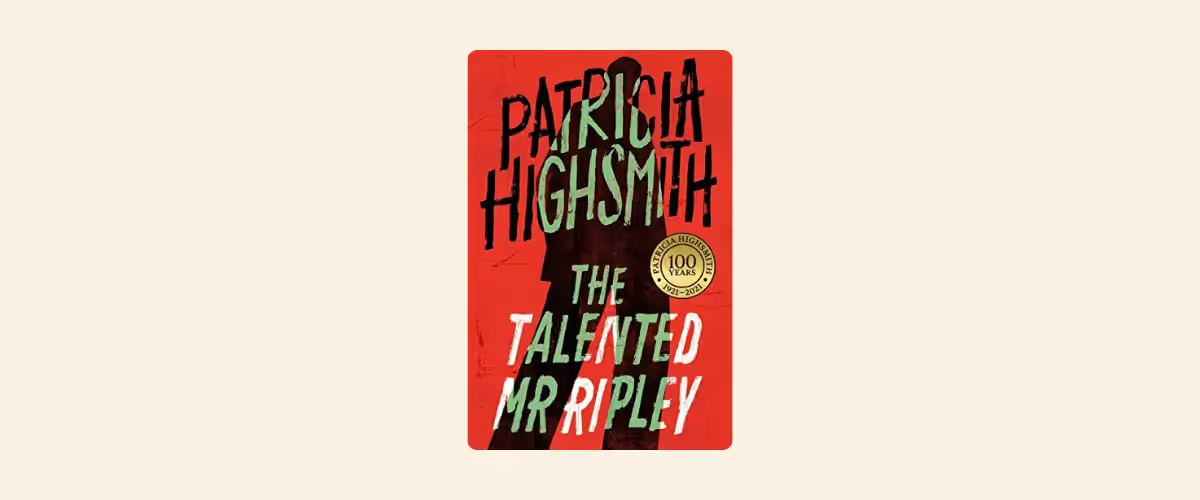Character flaws are one of the most important ingredients for a gripping story and a memorable protagonist. Whether they’re honorable, ethical good guys or down-and-out criminals with a wicked streak, they need some major flaw and a few minor flaws. And in the world of the character flaw, meaning stretches far beyond the all-important task of creating a believable cast.
How we’re introduced to our hero character (and their flaw) will define the shape of the story. It can even determine whether the novel will arc upward as their situation improves, or downward in a dramatic fall from grace.
Many writers can write. But few are naturals when it comes to storytelling. The good news is that storytelling skills can be learned, and because readers buy books for their stories, literary agents and publishers are always on the lookout for a great story. So, if you’re writing to get published, remember that what leaps out to publishers and agents alike is the story you’re telling. Storytelling begins with a character with a problem or a flaw.
Author Katie Khan, one of our writing coaches at The Novelry, has become obsessed with how we first meet our favorite complex characters in books and the major flaws that make them so compelling. How can we create fictional characters with the types of character flaws that will make them truly three-dimensional? Here, Katie takes a deep dive into how a flaw adds depth to your characters and your story as a whole.

How to introduce a character’s flaw
One of your biggest tasks when writing character flaws is deciding not only how but when to reveal them. Ideally, some fatal flaw will appear in chapter one, or as early as possible.
Remember: we need a character flaw for your hero, because a flawed character is an interesting one. They have somewhere to go, a ready-made arc of character development. Flaws create conflict and the potential for a character’s downfall. Someone who’s perfect with no past mistakes will have a flat arc—and that rarely makes for a good story. Plus, an interesting character flaw, psychology would say, makes for an interesting backstory.
Types of character flaws

So, what minor flaws, major weaknesses, and what fatal flaw might you consider giving your beloved characters? It can be tricky to define ‘fatal flaw’—after all, the trait that proves fatal for your major characters depends on their story and their goals.
Here are some common negative personality traits—and some less obvious flaws—you might consider.
Major flaws
- Arrogant or vain
- Conceited or self-righteous
- Narcissistic, self-centered, self-absorbed
- Libidinous or having excessive desire
- Predatory
- Excessive pride
- Deluded
- Boastful
- Vengeful
- Narrow-minded
- Easily angered or ill-tempered
- Lack of self-control
Your character might be more on the pathetic side of flawed—things that might seem anything from almost cute, almost positive personality traits to infuriating uselessness. These might seem like more minor character flaws to give your protagonist, but they can still hugely impact their character arc.
Minor flaws
- Miserable
- Helpless
- Isolative
- Slothful
- Apathetic
- Small-minded
- Indifferent
- Prone to misplaced trust and/or easily deceived
- Weak-willed
- Lacking knowledge or common sense
- Some irrational fear or self-doubt

How you introduce character flaws matters!
Going beyond the definition of a flaw, choosing and revealing your character’s flaw is, I think, one of the hardest parts of introducing the major characters in a story. In fact, it’s one of the hardest parts of writing a novel at all! And unfortunately, it’s also the most open to misinterpretation.
In early drafts, we often introduce characters as deeply unhappy and broken. In its extreme, the main character is so down on their luck that the first chapter is a misery-fest.
Beware, too, of writing characters who are so aware of being awful that they already stand on the precipice of self-hatred. Pity them, the author seems to urge; pity this tragic figure for their flaws and their plight.
This doesn’t work, I’m sorry to say. I’ve spent weeks, if not months, pondering why. I’ve concluded that when an author steps in and urges us to pity their character—especially from the moment they’re introduced—we cannot root for them.
We’re being given an opinion on a character’s negative traits, rather than being allowed to form one.
Worse still, when a character openly recognizes their flaws at the start of a story (‘I’m awful and I have to change’ ), their character arc falls flat. Not only are we being told what to feel about them, but they are not forced dynamically out of their equilibrium.
Resistance to change drives plot and conflict. Having no choice but to change is a story.
.avif)
Tips and techniques for character flaws
Try these hints and tricks when creating character flaws:
- Remove your authorial judgment from your character’s flaws
- Let character flaws speak for themselves
- Introduce the character’s triumphant flaw
- Put the character at odds with their setting
- Don’t fear writing unlikable characters
1. Remove your authorial judgment from your character’s flaws
Consider the protagonist’s flaws in Patricia Highsmith’s The Talented Mr. Ripley, one of our Hero Books at The Novelry.
Highsmith throws us into the opening scene, in media res. Tom Ripley believes he is being followed. Afraid he is in danger of discovery, he enters a bar on Fifth Avenue to see if the man will bring out a police badge and arrest him. Instead, the man introduces himself as the father of Dickie Greenleaf, a vague college acquaintance of Tom Ripley’s. Ripley is relieved.
He followed the man towards an empty table at the back of the little room. Reprieved, he thought. Free! Nobody was going to arrest him. This was about something else. No matter what it was, it wasn’t grand larceny or tampering with the mails or whatever they called it. Maybe Richard was in some kind of jam. Maybe Mr. Greenleaf wanted help, or advice. Tom knew just what to say to a father like Mr. Greenleaf.
—Patricia Highsmith, The Talented Mr. Ripley
Ripley’s criminal activity is presented so matter-of-factly here that I almost missed it: ‘it wasn’t grand larceny or tampering with the mails.’ Ripley has clearly been up to no good before this first chapter. And right on its tail, Highsmith points out Ripley’s true nature—a manipulative person with the ability to run a con on the wealthy for personal gain: ‘Tom knew just what to say to a father like Mr. Greenleaf.’

Why is Highsmith’s approach to Tom’s negative personality traits effective?
Think for a moment about how Highsmith introduced this character—and how she didn’t. Imagine if Tom Ripley felt remorse here, instead of a reprieve from jail. Imagine if Highsmith urged us to pity this morally corrupt creature.
It wouldn’t have the same effect. Ripley would be a whiny rule-breaker who deserves to face justice. It would be tiresome and dull.
Highsmith doesn’t judge her character’s personality, so we (the readers) don’t either. We’re in on the con. We’re off on an adventure story right from the outset, criminal behavior be damned.

2. Let character flaws speak for themselves
Let’s look at how the main character’s flaws are introduced in a more recent work: the multi-million-copy bestselling and award-winning novel Eleanor Oliphant is Completely Fine by Gail Honeyman.
In the first line of the novel, we meet Eleanor, who immediately tells us her status: unimportant.
When people ask me what I do—taxi drivers, dental hygienists—I tell them I work in an office. In almost nine years, no one’s ever asked what kind of office, or what sort of job I do there. I can’t decide whether that’s because I fit perfectly with their idea of what an office worker looks like, or whether people hear the phrase ‘work in an office’ and automatically fill in the blanks themselves—lady doing photocopying, man tapping at a keyboard. I’m not complaining. I’m delighted that I don’t have to get into the fascinating intricacies of accounts receivable with them.
—Gail Honeyman, Eleanor Oliphant is Completely Fine, p. 1
Oh, this is a tragic figure, isn’t it? Look at the other characters who ask Eleanor about her job: taxi drivers, dental hygienists. She could have added ‘hairdressers’ and we’d get the gist.
These people are duty-bound to ask personal questions as they go about their work rather than actual friends or people who are interested in her. Eleanor is a loner (perhaps, hence the name choice).

Why is Honeyman’s approach to Eleanor’s character flaws effective?
Again, take a moment to analyze how Honeyman introduces Eleanor and her less-than-perfect life.
Notice the total absence of the author’s opinion from the narrative. There is no pity to be found, either in the presentation of the story or in Eleanor’s narration. She doesn’t pity herself. In fact, the world’s lack of interest in Eleanor is great: she doesn’t have to explain the specifics of her very boring job!
As Eleanor details her daily routine, we learn that she eats lunch alone (a sandwich from Marks and Spencer on a Friday, ‘which rounds off the week nicely’), talks to no one, then goes home to an empty house where she listens to The Archers and eats food she doesn’t enjoy.
Her lonely working week is laid bare—and then she describes her weekends.
On Fridays, I don’t get the bus straight after work but instead I go to the Tesco Metro around the corner from the office and buy a margherita pizza, some Chianti and two big bottles of Glen’s vodka. When I get home, I eat the pizza and drink the wine. I have some vodka afterwards. I don’t need much on a Friday, just a few big swigs. I usually wake up on the sofa around 3 a.m., and I stumble off to bed. I drink the rest of the vodka over the weekend, spread it throughout both days so that I’m neither drunk nor sober. Monday takes a long time to come around.
—Gail Honeyman, Eleanor Oliphant is Completely Fine, p. 3
Still no authorial judgment on this character’s life. In fact, the only place judgment bleeds into the narrative is when Eleanor is talking about her colleagues, or the doctor she sees about the back pain she’s experiencing.
My tone went completely over his head. (...) That’s the downside to the younger ones; they have a terrible bedside manner.
—Gail Honeyman, Eleanor Oliphant is Completely Fine, p. 4
Other characters are treated with scorn. They are judged and found wanting. Eleanor’s treatment is empathetic, albeit matter-of-fact.
{{blog-banner-2="/blog-banners"}}
3. Introduce the character’s triumphant flaw
Though we are aware of the shortcomings of Eleanor Oliphant’s existence from the first line, we are less than five pages into the novel when Gail Honeyman hits us with Eleanor’s true character flaw.
I have always taken great pride in managing my life alone. I’m a sole survivor—I’m Eleanor Oliphant. I don’t need anyone else—there’s no big hole in my life, no missing part of my own particular puzzle.
—Gail Honeyman, Eleanor Oliphant is Completely Fine, p. 5
It’s not that she’s a lonely outsider with a few minor flaws, a bit of a quirky oddball misunderstood by others. It’s that Eleanor Oliphant is PROUD of her life. Her character flaw is presented as a triumph.
This is the key to writing nuanced and unique character flaws: they believe they are in the right.
There is something fascinating about people who wear their shortcomings like a shield. People who say things like ‘I’m plain-spoken, me,’ or ‘I don’t suffer fools lightly.’ They name their coping mechanisms rather than putting their finger on their true flaws.

A flaw by any other name...
Being ‘plain-spoken’ is being blunt and rude by another name, isn’t it? And what makes a person blunt and rude? Why do they act that way? Prod it, like a bruise. Underneath that defense, there’s the flaw—and sometimes, things that seem like minor flaws can, in fact, be major flaws. Think about the psychology of your character, and you create a specific sort of fascination with them. They feel three-dimensional, real, relatable.
A character who has put walls up so high they are impressed by themselves, whose coping mechanisms are a source of pride... A criminal relieved he is not being arrested but instead spots opportunity... A character certain the world is wrong and they are right... These are the fictional characters I’ll follow through 350 pages (and more), flaws and all.
Because when that belief begins to unravel, when their world begins to crumble, and conflict comes thick and fast... What a reckoning they’ve got in store for them.

4. Put the character at odds with their setting
When we think about how to introduce a character and their flaws, setting becomes extremely significant. I mentioned this in my blog about high-concept fiction, but I always return to the question: who is the worst-placed person to deal with the premise of this novel?
If your book is about an apocalypse, a character who over-relies on law and order is the ideal foil to experience the complete collapse of society. What will they do without their Excel spreadsheets? How will they cope? What sort of personal growth will enable them to overcome their fatal flaw and change?
Character flaws + opposition to setting = archetypes
In a novel about solving crime, we follow a flighty and disorganized detective who relies on gut instinct while their home and career unravel... We’ve seen those flaws before, haven’t we? There’s a reason this type of character’s flaws have become an archetype of the genre, if in need of a little refresh.

The character is in opposition to the setting. Though we all have minor flaws, their fatal flaw is in opposition to their quest. They are the worst-placed person to do this thing, and by doing it, they must change. They will grow. That’s how flaws can generate compelling character development.
5. Don’t fear writing unlikable characters
Many writers are plagued by the common complaint that a character with flaws isn’t ‘likable.’
Andy Weir, bestselling author of the stratospherically successful The Martian, spoke about the likability of his own characters on the Write-Off Podcast with Francesca Steele.

Regarding his second novel, Artemis, Weir said:
People didn’t like the main character. I made her too flawed, maybe a little unlikable; a lot of people had a hard time rooting for someone who is so much the agent of her own problems.
—Andy Weir
In my eyes, likable doesn’t mean wanting to go for a beer with that character in real life, swapping tips on baking and London’s best dog walks. We’re not after the kind of character trait we look for in a best friend or life partner.
I’m probably never going to ‘like’ a misogynist or a murderer. And if you give me a two-dimensional portrayal of an ‘angry’ or ‘self-pitying’ character, then my empathy will likely go even further AWOL.

But if you can introduce that character without authorial judgment, if you can make the character believe their flaws are their strength, and if you keep them unaware of their true flaw until the world crumbles around them and they have no choice but to face their shortcomings (and change, perhaps even overcome them)... Then, I will follow that person anywhere, even on a dramatic downward descent to self-destruction.
We will be invested enough to root for them, flaws and all, whether that character is charming or unlikable, good or bad. Hopefully, a bit of both!
Welcome home, writers. Join us on the world’s best creative writing courses to create, write, and complete your book. Sign up and start today.



.avif)
.avif)
.avif)
.avif)